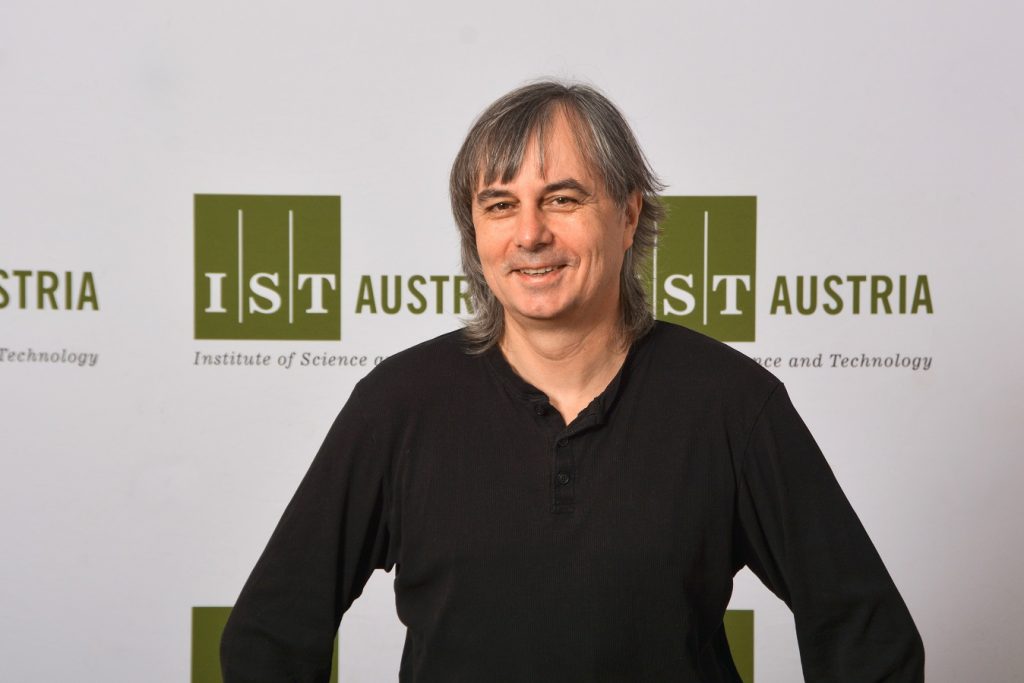June 13, 2018
IST Austria Professor Herbert Edelsbrunner receives 2018 Wittgenstein Prize
Mathematician is honored with Austria’s most important and highly valued science award
Herbert Edelsbrunner, a professor at the Institute of Science and Technology Austria (IST Austria) since 2009, is one of the world’s leading researchers in computational geometry and topology and has played a significant role in laying the foundations of his field. Now, the FWF has recognized his achievements, and has awarded him Austria’s most important science prize. Worth 1.5 million euros, the prize will support the mathematician’s research. Herbert Edelsbrunner is the third Wittgenstein Prize winner at IST Austria, following computer scientist Tom Henzinger, who received the prize in 2012, and neuroscientist Peter Jonas, who was honored in 2016.
“I am honored—and very happy—to receive the Wittgenstein Prize,” says Herbert Edelsbrunner. “What excites me the most, however, are the opportunities opened up by the award: I will be able to establish Austria, and the Klosterneuburg area in particular, as the world’s leading research center for computational geometry and topology.”
With the resources newly made available, research goals can be reached more quickly, and previously unexplored applications can be approached using topological methods. “In some cases, alternative solutions will arise, with advantages and disadvantages as compared to conventional methods. But we can also expect cases in which new research opens the door to undreamed-of possibilities,” adds Edelsbrunner.
Between mathematics and computer science
Algorithmic geometry and topology is a research area at the interface between information science and mathematics, and is concerned with the computer-aided implementation of geometric and topological conditions and their application in various branches of engineering and the natural sciences. In one sense, this new area is a logical extension of computational geometry, but it is based on other mathematical foundations as well, which explains why few researchers are active in the overlapping area of the two domains.
Possible applications include not only scientific visualization, structural molecular biology, and systems biology, but also geometric processing, medical imaging, and orthodontics. What these applications have in common is the dependence on the shapes and/or detection of objects, as well as their matching and classification. Topology is the branch of mathematics that provides the methods and framework to approach these questions methodically. However, in order to be able to use these mathematical insights in applications, algorithms and computer software are needed. This motivated the study of topology and geometry using tools and concepts from computer science.
Currently, Edelsbrunner is pursuing three main research areas, each with the goal of further developing computational topology and thus opening up new areas of application. These emphases include stochastic, algebraic, and geometric questions within the field of topological data analysis. All three aspects are necessary to gain the—possibly revolutionary—insights necessary to understand the microscopic world of materials.
“My warmest congratulations to Herbert Edelsbrunner on receiving the Wittgenstein Prize 2018. Having joined IST Austria shortly after the inauguration, he is one of the Institute’s pioneering professors. With his work, which is at the interface of mathematics and computer science, he exemplifies the Institute’s basic principle of interdisciplinary,” says Thomas Henzinger, President of IST Austria and 2012 Wittgenstein Prize winner.
About Herbert Edelsbrunner
Herbert Edelsbrunner is a native of Styria and holds a doctorate in technical mathematics from Graz University of Technology. Soon after graduating, he moved to the University of Illinois at Urbana-Champaign, USA, where he led a research group as associate, and later as full, professor. In 1996, he founded the highly successful software company Raindrop Geomagic Inc. During his more than ten-year directorship of the company, he demonstrated the relevance and usefulness of theoretical research to industry. In addition, he taught and researched for over ten years at Duke University, USA, as Professor of Arts and Sciences. In 2009, he joined the then just-founded IST Austria.
Edelsbrunner has received numerous awards and honors. He is a Fellow of the European Association for Theoretical Computer Science, member of the Austrian Academy of Sciences, member of the German Academy of Sciences Leopoldina, member of Academia Europaea, and member of the American Academy of Arts and Sciences. He received the National Science Foundation’s Waterman Award, is an ISI highly-cited scientist, and recently received a prestigious Advanced Grant from the European Research Council (ERC). According to Microsoft Academic Search, he is the twelfth most cited theoretical computer scientist in the world and the most cited in Europe.




